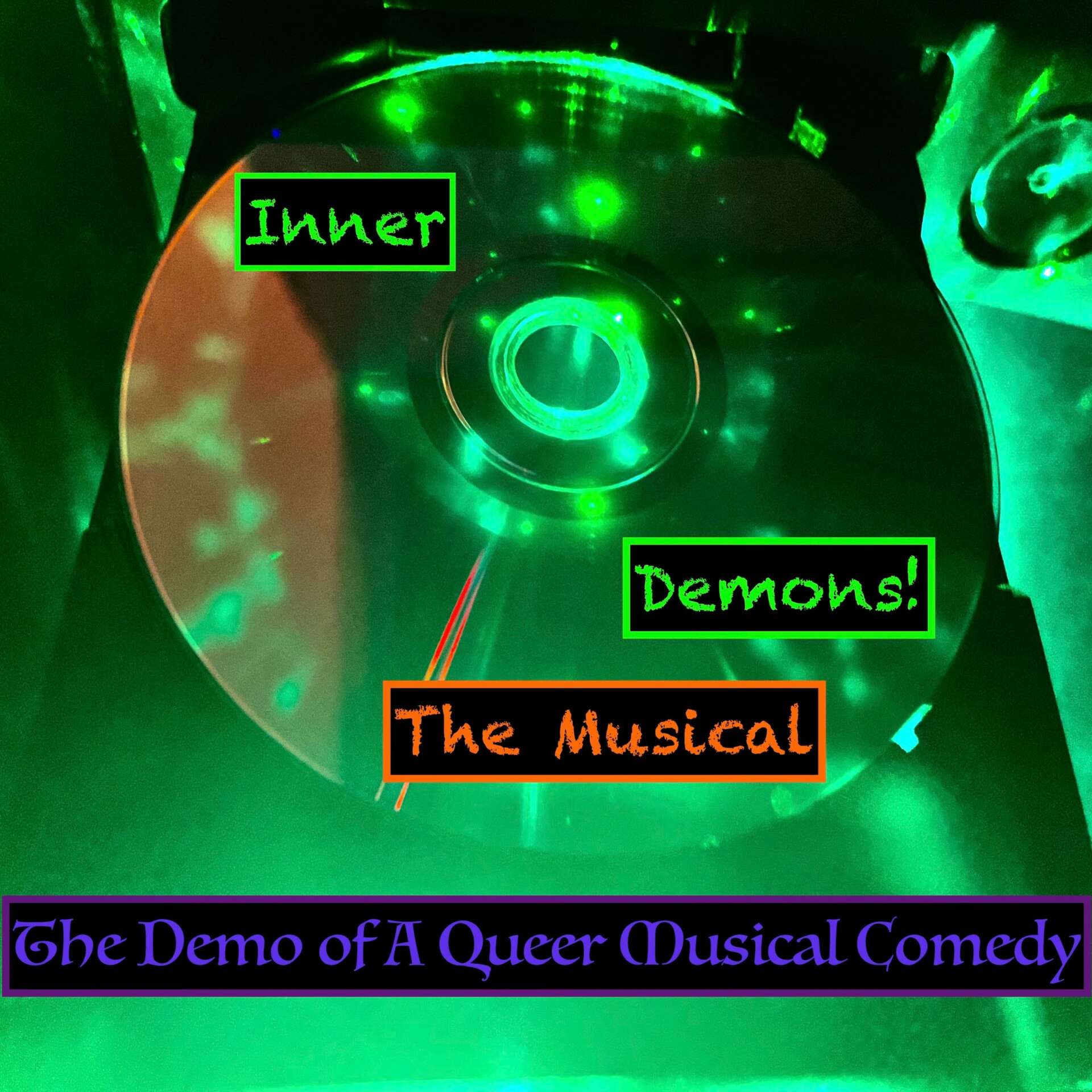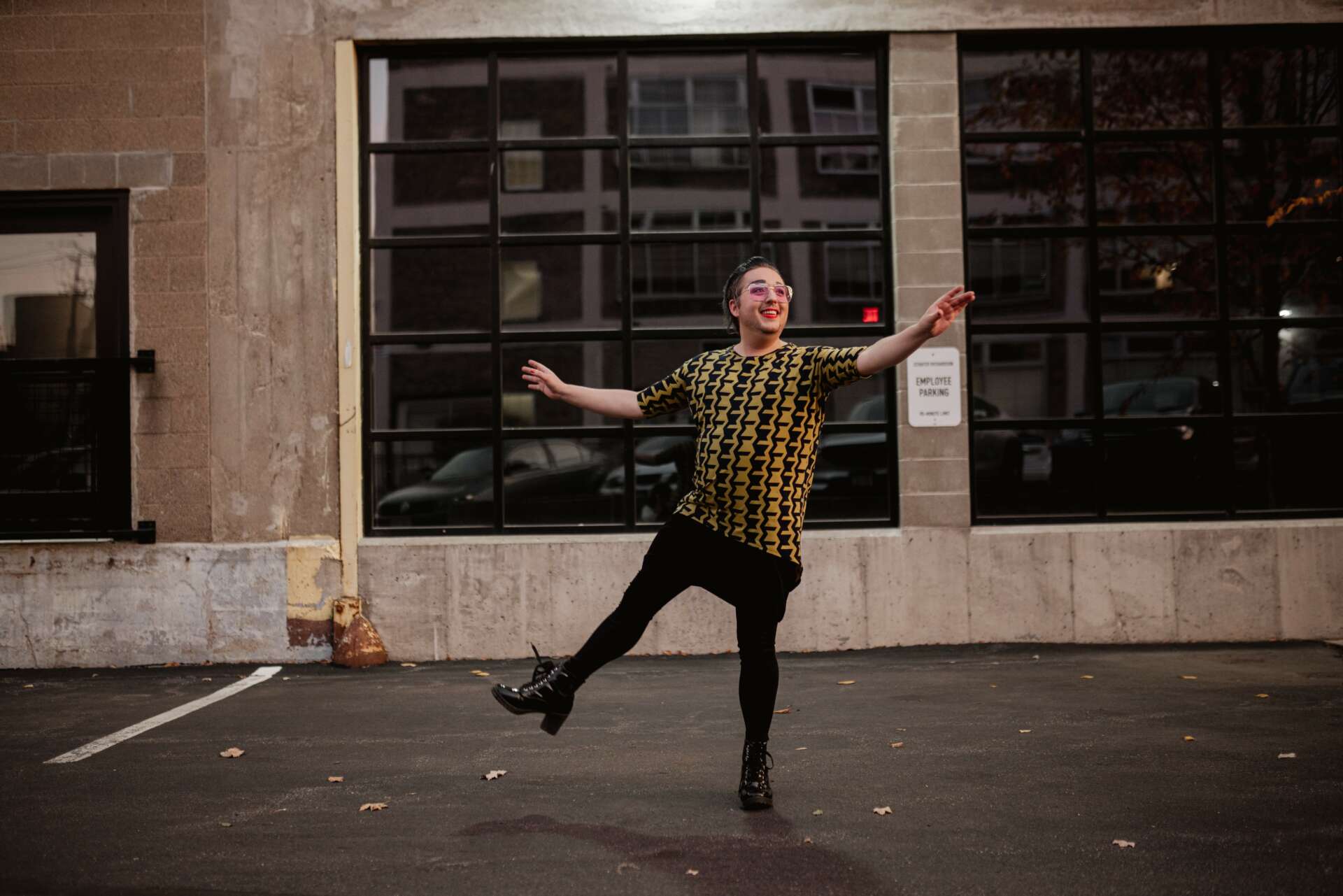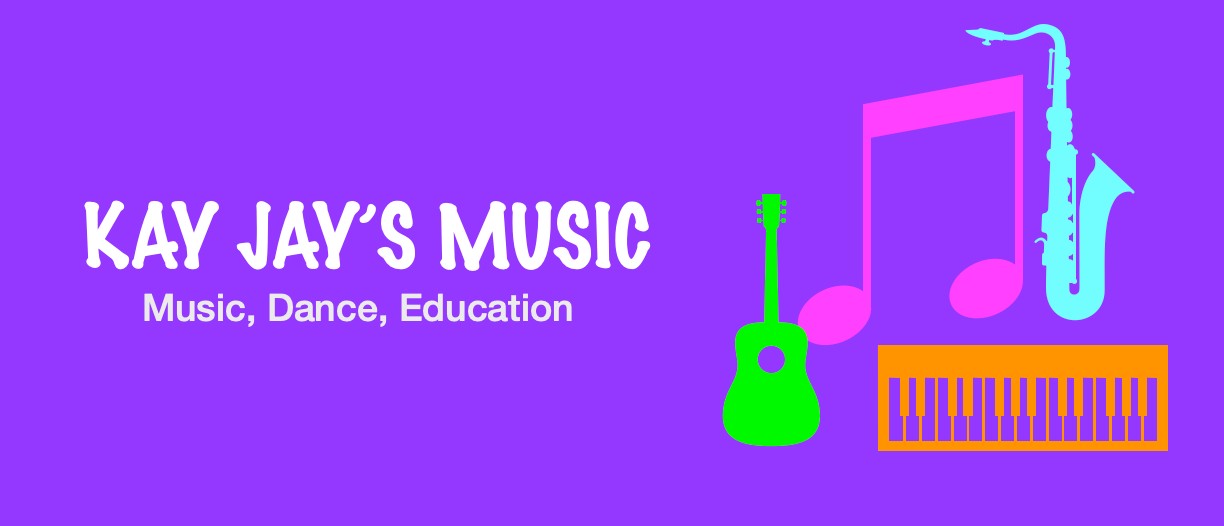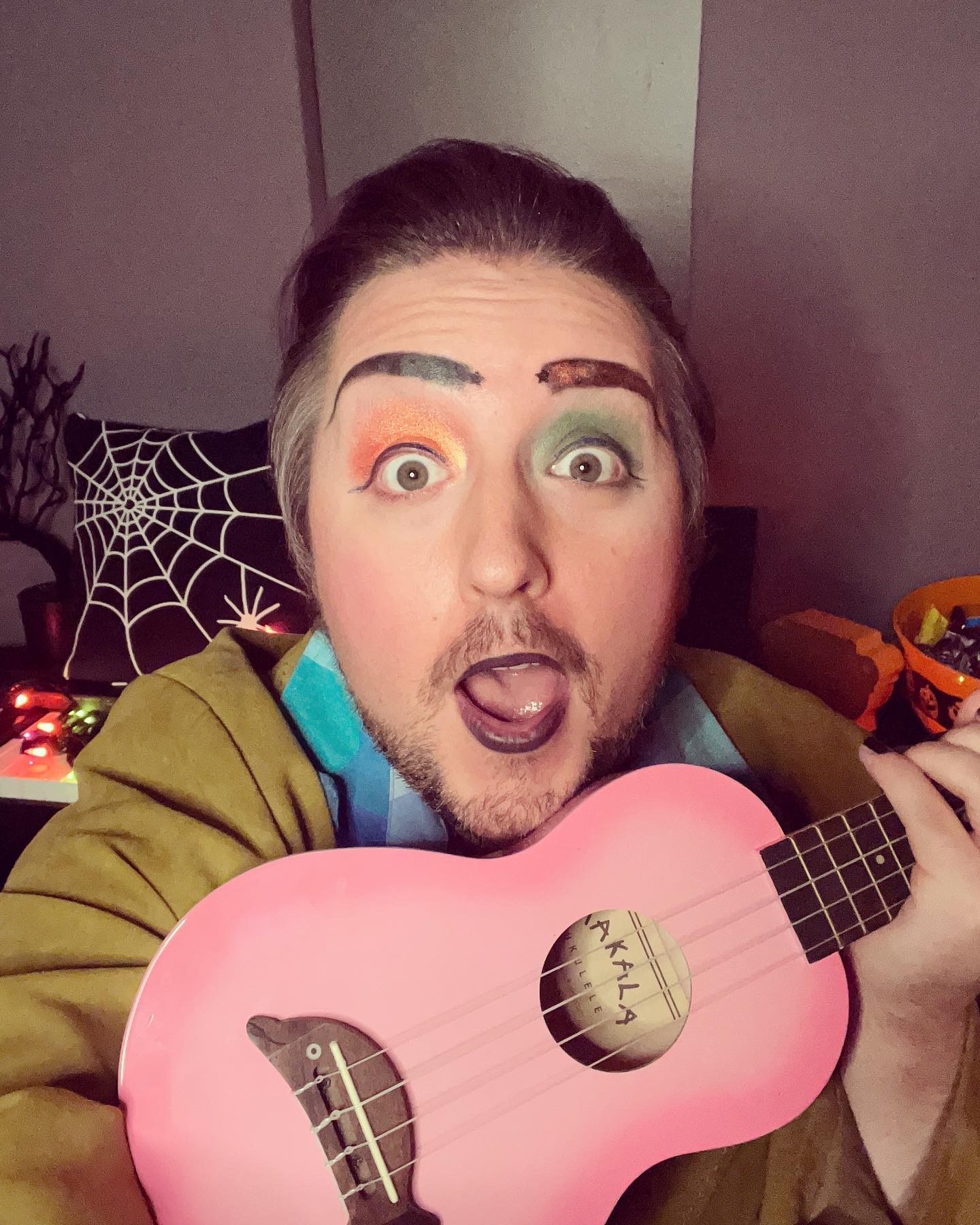We caught up with the brilliant and insightful Kay Jay Olson a few weeks ago and have shared our conversation below.
Hi Kay Jay, thanks for joining us today. We’d love to hear about a project that you’ve worked on that’s meant a lot to you.
Recently, I completed the full score and demo album for my first full length musical titled “Inner Demons: The Musical.” The work has mean so much to me, because it is a culmination of things that I hold near and dear – Queer issues, horror movies, and community driven narratives.
When I started working on Inner Demons, I wanted to focus in on creating work for queer people that would also be created by queer people. I originally wrote an album of 14 songs which ended up being the story of my journey to accept myself and come out as genderqueer/trans. It then, over the following two years, underwent shifts and changes (and a lot of new music) to become the full story it now represents.
The story centers on five friends, each of which are unnamed in the script and the score. They are given a two sentence description, which they will then use to create a character utilizing their own lived experiences through devised theatre and improvisation. As such, the script is devoid of dialogue, but rather is made up of beats that move the plot along from scene to scene and song to song. In doing this, I hope to be able to work with performers from a variety of walks of life who are open and willing to tapping into their own stories to create the world of the show.
With over 15 years of experience in the world of performing arts, I know that things are still very gendered – people are forced into boxes in order to remain “marketable.” I wanted to create a show that required as little of those things as possible. The music, while not without challenges, is meant to be picked up and learned by performers of varying ability levels. My goal is to break down barriers to access whenever possible, not create new ones. Ultimately, the show is about community. How do we as individuals work to breakdown our own barriers and face our demons? How then do we reach out and build those connections with others to create stronger communities? I hope to answer some of this through the show, and the process of creating it


Kay Jay, love having you share your insights with us. Before we ask you more questions, maybe you can take a moment to introduce yourself to our readers who might have missed our earlier conversations?
Ever since I was very young, music and performance have been a very important part of my life. Whether it was singing “Boom Boom” or my ABC’s, singing and dancing along to The Nightmare Before Christmas, or just learning in my music class, I knew that I was going to keep music in my life forever.
Growing up in a small town (Altoona, WI – right outside of Eau Claire) I sometimes had to find ways to keep myself occupied. And that often involved reading, writing, and playing my Gameboy. But I also took piano lessons and played the recorder and the saxophone as well, which laid the foundation for my musical studies. As I moved into high school, I joined the competitive show choir in addition to concert and jazz band, chamber choir and concert choir. I even did over 15 productions with the local community theatres! I had made performing a part of my life in so many ways. By the time I was a junior, I was teaching music and choreographing the middle school show choir at my school. I continued to do this for six years, and took on the JV high school show choir for three years as their director and choreographer.
It wasn’t until I finished my bachelor’s degree in musical theatre at the University of Wisconsin – La Crosse that I began to develop an identity as a composer. I had always felt that writing music wasn’t in my wheelhouse. This was in part due to setting my own limitations on myself, but also the way that taking music theory at university made everything seem so complicated and full of barriers. After finishing a secondary honors program in theatre at the Theatre Lab School of Dramatic Arts in Washington, DC, I moved back to the midwest and finally settled in Minneapolis. It was here that I returned to academia and attended Augsburg University in Minneapolis, where I pursued and earned a Masters of Education in Music Education and Teaching Artistry. It also showed me how important community driven initiatives are, and that collaboration is key to success in artistic endeavors just as much as individual creative ambition.
This experience showed me that there were so many ways to be a teacher and a performer – as a teaching artist! I began teaching piano and voice lessons, and soon added ukulele, beginner guitar and composition/digital music production to the list. And I took that collaborative approach to my lessons, which meant allowing students to have say and sway over their studies. During quarantine, I developed new ways to teach virtually, and it is currently a major part of my teaching. (Though I still teach mostly in person) I now teach around 30 – 40 students at any given time between my studios, and each of these experiences have shown me new ways to approach performance and composition in my own life.
Throughout all of this time, I have striven to be an open educator who allows a window into who I am as a person. However, as a queer individual, I have found that the boundaries I put up in the past were for my safety more so than the students I teach. It was when I came out as genderqueer/trans that I was able to be more authentically myself. I develop stronger bonds with the people I teach, the performers I collaborate with, and the art that I create myself because of this truth that I live out and proud with. It has allowed me to write several choral compositions, two albums of personal music, and even a full length musical! I utilize these successes to help others see that if they truly dream of making music, it’s possible for them in so many ways.
As I make new connections and work with more people, I hope to continue to take that collaborative approach that has allowed me to have so many wonderful and successful experiences as a performer and educator. I also hope that it helps me continue to find new people to work with, either as a client seeking music lessons or coaching or as a collaborator looking to create something new and beautiful!
Learning and unlearning are both critical parts of growth – can you share a story of a time when you had to unlearn a lesson?
A major lesson I had to unlearn centers around identity – and how important it is (and was) for me to remain true to myself. For many in the theatre space, there is a school of thought that an actor must find the boxes that they check when they go in for auditions or create a resume or a headshot… And yet, we are also taught to be an open vessel capable of playing any part or any thing.
That’s quite a conundrum.
I remember being told during a voice studio class once while singing “Hey There” from ‘The Pajama Game’ that my performance was ‘surprising’ because that person had never seen me as a leading man. (Little did that person or I know that a leading man was anything but what I wanted for myself). But the backhanded compliment has stuck with me for a long time. I know that as a short queer person with a tendency toward the feminine side of the spectrum, certain traits don’t come naturally to me, and are generally unbelievable by an audience. So I made a choice then that I no longer wanted to play that game. And I have developed new ways to hold fast to that particular conviction in the last couple of years. I work to seek out like-minded companies and directors, and choose not to spend my time on auditions where I will hear the same phrases over and over. These tend to be general surprise that I sound or move or act the way I do based on their initial reaction to my appearance. “Wow, your voice wasn’t what I expected!” That one I’ve gotten on multiple occasions.
This is something that queer people (particularly effeminate or gender non-conforming individuals) deal with a lot of the time. We are often left out of casting or asked to change for the role in ways that are not always appropriate. Why not change the ideals of a role or a show (or choose different content/programming) to highlight the talents and traits of the students or performers you have? It took a very long time for me to really figure out that, for myself (and others like me) it can be necessary to develop a sense of our own self and walk into casting rooms or situations ready to just be who we are.
I spent far too much time attempting to force my trapezoid into a square, and it just wasn’t ever going to happen. I know better now. And I strive to create spaces and creative work that allows for greater expression and celebration of people from varied walks of life. It keeps things more interesting, and allows a safe zone for individuals who haven’t always found one.


In your view, what can society to do to best support artists, creatives and a thriving creative ecosystem?
Generally speaking, funding for the arts is a vital way that society can do better to support artists. The issue we run into more often than not is not finding willing participants with the drive and ambition to create. The issue is almost always money. Those who have it in large quantities are able to create with much more abandon and with less fear of a grant or backer falling through and derailing an entire project in the middle.
While I do believe that not having resources can allow for brilliant and creative workarounds, the reality is that in a country where money is the greatest signifier of power (a capitalist society, to be frank) funding is vital, Funding for the arts changes lives. Funding for the arts saves lives. More marginalized groups and lesser known companies would thrive and create beautiful, nuanced, and powerful works if there were a more equitable distribution of resources. In a patronage based system where donors have sway, larger companies are often tied to the whims of their highest donors. While this makes sense, it doesn’t allow for the works of lesser known or newer artists to really thrive.
Plus, with a system where large donations are the primary funding for arts programs, it doesn’t keep the funding flowing consistently, which can also lead to issues with allocation of funds for a full season or set of projects.
The reality of the arts is this – we need them. We need art to thrive. How else did so many of us make it through the early days of the quarantine in 2020? We turned to our artists to help us make it through. Ultimately, this is the solidarity we need for smaller and lesser known artists.
If individuals or smaller companies wish to help, they can donate in smaller amounts to artists they see making beautiful changes in the world – and make monthly donations that can help them sustain their work. Mutual aid works well for this as well. Having a fund for artists in need is a great way to pool resources and ensure the safety of the most vulnerable in a group. Do you feel like you have the resources, the connections or the means to create something like this? It can be a beautiful way to give back and support the community around you.
Contact Info:
- Website: www.kayjaysmusic.com
- Instagram: https://www.instagram.com/kayjaysmusic/
- Facebook: https://www.facebook.com/KayJayOlsonMusic
- Twitter: @kayjaysmusic
- Youtube: https://www.youtube.com/channel/UCtk4rnDK5L3Cuw8887xVzGQ
- Other: www.patreon.com/kayjaysmusic
Image Credits
Dahli Durley


